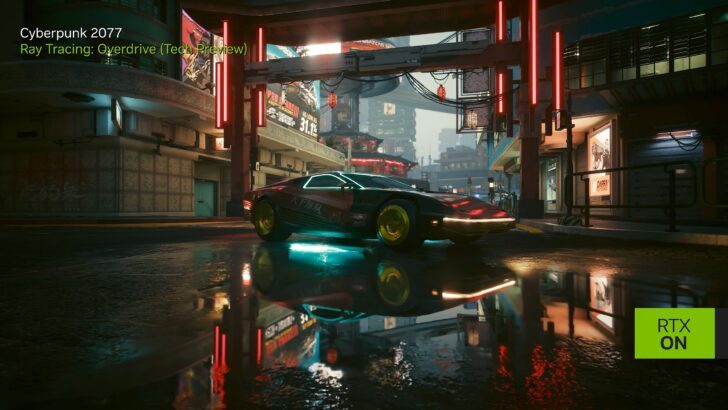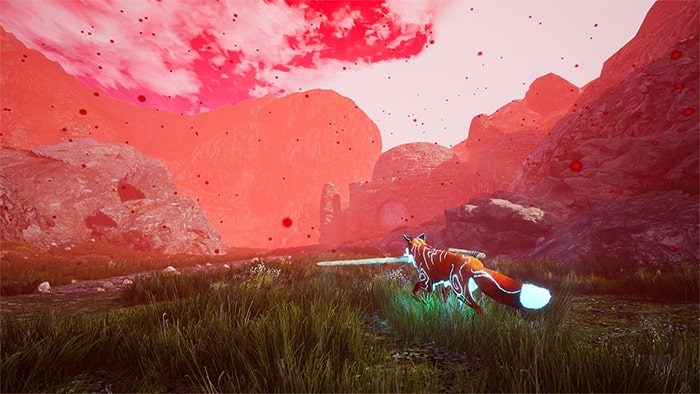

The Cyberpunk 2077 Path Tracing technology preview is out now, released as part of title update 1.62 (which also added NVIDIA DLAA and Intel XeSS support), and it’s utterly glorious, delivering by far the most advanced lighting system seen yet in a modern game while also running at smooth frame rates on NVIDIA’s GeForce RTX 40 Series GPUs.
Beyond the tests of the benchmark mode, I’ve roamed around Night City in regular open world gameplay and was amazed at the consistency of the frame rate and frame times. To achieve the maximum visual impact, I recommend installing Halk Hogan’s HD Reworked Project mod since it improves a lot of textures with nearly no performance impact.
Ahead of the debut of the Cyberpunk 2077 Path Tracing technology preview, I was able to interview Jakub Knapik (Global Art Director at CD PROJEKT RED) to discuss the behind-the-scenes work on this monumental upgrade and what comes next, such as the implementation of another performance-enhancing feature introduced with the Ada Lovelace architecture: Opacity Micro-Maps.

The Cyberpunk 2077 RT: Overdrive Mode has been released as a path-tracing Technology Preview. Can you explain exactly what that means?
For almost two years, together with Nvidia, we were working on a totally new rendering technology like the one used for visual effects in films and animation, with the goal being to make it possible to experience similar quality in real time in Cyberpunk 2077. It is a dramatically different way of calculating light and reflection in our game that no longer relies on systems like reflection probes, GI probes, or shadow budgets, which are a foundation of most real-time solutions. As a result, it was a herculean effort to make an incredibly massive and complex game that was already released work with that paradigm in mind. There were plenty of edge cases that the previous technology created that we had to work around when implementing the new approach. But even at the stage that we are right now, the experience is already quite remarkable. So much so that we decided we want to release it as a Technology Preview — a feature we highlight as a work in progress but already fun to use when the update drops. Of course, we plan to continue working on the technology, further refining it as we go, and adapting it to our needs.
When RT: Overdrive Mode was first announced, it was said to consist of the following features: RTXDI, multi-bounce indirect lighting and reflections, full-resolution ray traced reflections, and improved PBR lighting. Are these all available now with the April 11th update?
Absolutely. We fundamentally revamped the whole lighting and reflection pipeline with a unified rendering of indirect illumination, but also totally revamped direct illumination with the use of RTXDI. Together they provide a very precise and almost unlimited world presentation.
We really wanted to crank up the visual fidelity of the game to the very max. As I said before, however, there’s plenty of room to further improve on what we’ve achieved so far, and we very much plan to keep working on the solution with our future games in mind.
Out of all the new technologies featured in the Cyberpunk 2077 Path Tracing Technology Preview, if you had to pick the most impactful one, which would you choose and why?
It is hard to pick just one, to be honest, and I think it’s important to understand how these systems work in tandem. RTXDI is responsible for Direct Illumination, which means it’s responsible for giving information about the light that comes from a source and hits a surface. Previously, shadowing used to be a very painful part of the process. In games, we use a shadow budget, meaning that we can only cast shadows from carefully selected lights in our game. In many cases, we also use very inaccurate shadow maps. So imagine a busy street, with only a few lights capable of casting a shadow, while most of them just light through objects, making them look very unrealistic and disconnected from the surroundings. With RTXDI, we get up to a thousand or even more lights casting super realistic soft shadows on the screen. Practically every light you see casts shadows. That is a fundamental change in realism, depth of the scene, and dimensionality. But it is also a critical element if we assume that every light source, be it a lamp, neon, or screen, is emitting an Indirect Illumination, meaning light that bounces off of surfaces in the world. Without proper shadows in the Direct Illumination part, the Indirect Illumination part would feel totally off and unrealistic. Connecting both parts allowed us to push Path Tracing as realistically as possible.
Your GDC 2023 talk was titled ‘Bringing Path Tracing into Nighty City’. Are you using the new Path Tracing SDK? What were the challenges in retrofitting your existing pipeline with a Path Tracing approach?
We are using the same technology as the one in the SDK. I mentioned it before a bit — in short, dramatically changing the approach to rendering for a massive and complex open world game, and an already released one at that, is anything but easy. The good news was that from day one of the development of both Cyberpunk 2077 and the REDengine iteration used for the game, we were chasing physical correctness in the way we structured lighting. This meant that our day and night system is based on real-world measurements and the lights are within more or less realistic brackets. We also used materials that are based on PBR charts. All of the decisions we made paid off in our Ray Tracing implementation for the game’s release, and Ray Tracing: Overdrive is the next step in the evolution of the game’s visuals, made possible by the approach we chose to go along with from the very start. Still, many solutions we used in the past that did support hybrid rendering didn’t mesh well with the more clean, proper, and unified results Path Tracing was bringing to the table. So in many cases, working in the engine was like navigating a minefield and disarming the mines along the way. Overall, I think the biggest struggle was tweaking the system so that the highly complex world of Cyberpunk 2077 works in a performant way and the quality of signals is good enough for denoising to tackle it properly.

Which, if any, rasterized elements remain in RT Overdrive mode?
We currently still use forward rendering that steps out of the Path Tracing domain and volumetrics are obviously also rendered separately. We are still working on the final solution for both of those areas for our full release, though. The forwards are especially tricky, as their energy often stands out from the context of the world. Forwards rely on reflection probes in our game and the data stored in those is drastically different to the accurate world depiction that Path Tracing provides.
NVIDIA said that Shader Execution Reordering (SER) is supported in the Cyberpunk 2077 Path Tracing mode. Was the implementation quick, and were the benefits worth it?
I don’t recall exactly how much time it took us to implement SER, but I believe it went rather smoothly, to be honest. The most important benefit that comes with this is a big gain in the speed we get. I don’t think we could get Path Tracing to work in a performant way without using all the tools at our disposal to maximize any and all gains we can get. All those individual technologies really add up to creating the solution.
Are you planning to also take advantage of the remaining optimizations introduced with the Ada Lovelace architecture, such as Displaced Micro-Mesh (DMM) and Opacity Micro-Maps (OMM)?
We are currently working on OMM implementation, but I’m not super certain of what will be our decision regarding DMM. For sure it is a revolutionary technology that brings incredible fidelity to the screen, we just need to see how practical it would be for us taking into account the state we have the game in currently.
It is widely believed that DLSS 3/Frame Generation will be the only way to experience Cyberpunk 2077 Path Tracing at smooth frame rates and high resolution (4K). Is this correct? Based on your testing, how much more taxing is it compared to the previous Psycho setting?
I would say so. The reality is that Path Tracing is very demanding on hardware performance and it is really a solution of the future. The market is not yet saturated with cards that can easily support it. DLSS 3/Frame Generation is literally almost doubling the frame rate on the screen, and quite frankly, that is a very generous gain in performance. We will be sharing performance recommendations in the release notes of our update, as we are still gathering necessary info regarding a spectrum of systems.
Is Cyberpunk 2077 Path Tracing compatible with RT-capable GPUs from other vendors?
Absolutely, we always worked on our Ray Tracing solution with a hardware-agnostic approach. We don’t want to limit our players to just one vendor and it is no different with Ray Tracing: Overdrive. We are providing two options for using rendering mode. One is for real-time game experience for the more performant platforms, and one is limited to Photo Mode. Both modes work on every Ray Tracing-capable PC platform with one important spec limitation to consider: the VRAM of your graphic cards. We provided a detailed description regarding the matter in our release notes.
Thank you for your time.

